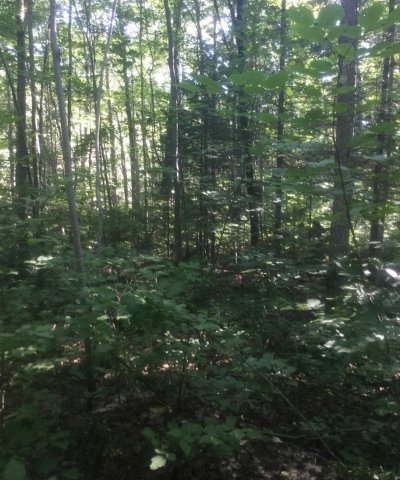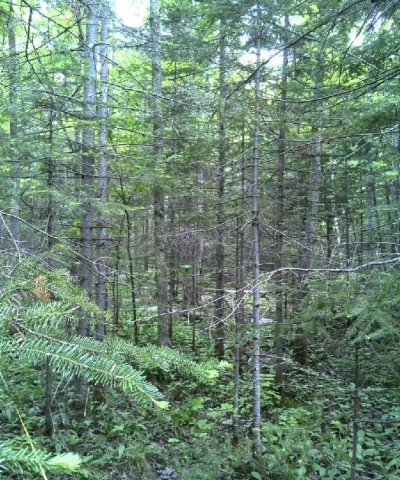
Natural Resources
Conservation Service
Ecological site R092XY011WI
Moist Loamy Lowlands
Last updated: 4/09/2020
Accessed: 12/20/2025
General information
Provisional. A provisional ecological site description has undergone quality control and quality assurance review. It contains a working state and transition model and enough information to identify the ecological site.
MLRA notes
Major Land Resource Area (MLRA): 092X–Superior Lake Plain
The Wisconsin portion of the Superior Lake Plain (MLRA 92) corresponds very closely to the Superior Coastal Plain Ecological Landscape published by Wisconsin Department of Natural Resources (WDNR 2015). The following brief overview of this MLRA is borrowed from that publication.
The Superior Coastal Plain is bordered on the north by Lake Superior and on the south by the Northwest Sands, Northwest Lowlands, and North Central Forest Ecological Landscapes. The total land area is approximately 1.2 million acres, which mostly consists of privately-owned forestland. The climate is strongly influenced by Lake Superior, resulting in cooler summers, warmer winters, and greater precipitation compared to more inland locations. The most extensive landform in this ecological landscape is a nearly level plain of lacustrine clays that slopes gently northward toward Lake Superior. The coastal plain is cut by deeply incised stream drainages and interrupted by the comparatively rugged Bayfield Peninsula.
During the Late Wisconsin glacial period, this area was covered with the advancing and retreating lobes of Superior and Chippewa. The landscape was rippled with moraines, but they were subdued by deposition of lacustrine materials. As the glaciers receded, glacial lakes riddled the landscape—most notably, Glacial Lake Duluth. The glacier receded eastward, exposing the western Lake Superior Basin. The ice covered the eastern basin, blocking the outlet of the lake, and continued to recede and contribute meltwaters that filled the glacial lake. The deep, red clays were deposited during this period of glacial lakes. The meltwaters from the glacier also contained sands which were deposited along the edge of the glacial lakes as beach deposits. Deep, narrow valleys have since been carved by rivers and streams flowing north into Lake Superior.
Historically, the Superior Coastal Plain was almost entirely forested. Various mixtures of eastern white pine (Pinus strobus), white spruce (Picea glauca), balsam fir (Abies balsamea), white birch (Betula papyrifera), balsam poplar (Populus balsamifera), quaking aspen (Populus tremuloides), and northern white-cedar (Thuja occidentalis) occurred on the fine-textured glacio-lacustrine deposits bordering much of the Lake Superior coast. Sandy soils, sometimes interlayered with clays, occur in some places. Such areas supported forests dominated by eastern white pine and red pine (Pinus resinosa). Eastern white pine was strongly dominant in some areas, according to mid-19th century notes left by surveyors of the federal General Land Office (Finley, R. 1976). Dry-mesic to wet-mesic northern hardwoods or hemlock-hardwood forests were prevalent on the glacial tills of the Bayfield Peninsula. Large peatlands occurred along the Lake Superior shoreline, associated with drowned river mouths.
Classification relationships
Habitat Types of N. Wisconsin (Kotar, 2002): Three sites in this ES key out to Acer rubrum – Abies balsamea / Vaccinium spp. – Cornus canadensis [ArAbVCo], three sites key out to Acer rubrum – Abies balsamea / Sanicula spp. [ArAbSn], and two sites key out to Acer saccharum / Sanicula spp. - Mitchella repens [ASnMi].
Biophysical Setting (Landfire, 2014): This is ES is mapped as Larentian – Acadian Northern Hardwoods Forest – Hemlock, Laurentian – Acadian Sub-boreal Mesic Balsam Fir-Spruce Forest, and Laurentian – Acadian – Pine – Hemlock – Hardwood Forest. The ES is not well represented by any of these, but most similar to Sub-Boreal Mesic Balsam Fir - Spruce Forest.
WDNR Natural Communities (WDNR, 2015): This ES is not well represented by any of the described natural communities, but bears some resemblance to Northern Wet-Mesic Forest and Boreal Forest.
USFS Subregions: Superior-Ashland Clay Plain Subsection (212Ya); May contain small areas of Ewen Dissected Lake Plain Subsection (212Jo), Winegar Moraines Subsection (212Jc), Gogebic-Penokee Iron Range Subsection (212Jb), and NorthShore Highlands Subsection (212Lb)*
Major Land Resource Area (MLRA): Superior Lake Plain (92)
Ecological site concept
Moist Loamy Lowlands has a small extent across MLRA 92. These sites have soils with some variability, but the central concept is finer materials throughout or at some depth in the soil profile, upland position, and are somewhat poorly drained, so they remain moist except in dry periods. The soils formed in loamy and silty till, in stratified silty glaciolacustrine deposits, in stratified loamy glaciolacustrine or glaciofluvial deposits, or in a sandy glaciofluvial mantle over the loamy to silty deposits. The soils range from extremely acid to moderately alkaline.
Historically, shade tolerant balsam fir and white spruce were best represented tree species on this ES, but scattered white and red pines were also common. Following early logging, trembling aspen became the dominant forest type, but succession to balsam fir and, to a lesser degree, white spruce and red maple is evident everywhere where seed sources are present. While there is no good record of the degree of red maple representation in the pre European settlement forests, the species is well represented and successfully reproducing today. Ground flora includes ferns, sedges, grasses, raspberries, horsetail, and yellow bead-lily.
This ES differs from other loamy ES’ based on its drainage class and remaining moist for most of the growing season. It differs from Moist Sandy Lowlands and Moist Clayey Lowlands based on soil texture, parent material, and the height of seasonally high water table. Moist Sandy Lowlands often has a seasonally high water table of 30 to 76 cm, the clayey uplands has a depth of 0 to 30 cm, and this loamy uplands has a depth of 0 to 76 cm. The range in characteristics of Moist Loamy Lowlands is based on its range in parent materials—mainly the presence of a sandy mantle on some sites.
Associated sites
| R092XY007WI |
Wet Loamy or Clayey Lowlands These sites are poorly drained soils formed in mainly clayey though sometimes loamy glaciofluvial and silty glaciolacustrine sediments. They have a seasonally high water table and remain saturated for much of the growing season, creating hydric conditions. HGM criteria: recharge, Depressional. The loamy sites are often adjacent to Moist Loamy Lowlands, but located on a lower landscape position in the drainage sequence. |
|---|---|
| R092XY014WI |
Loamy Uplands These sites are deep, moderately well to well drained loamy soils. They formed in loamy and silty till, glaciolacustrine, or glaciofluvial deposits. Some sites have a sandy mantle. Many sites have a seasonally high water table, but does not remain saturated for the growing season. Soils range from strongly acid to strongly alkaline, and some sites have carbonates present. These sites are often adjacent to Moist Loamy Lowlands, but located on a higher landscape position in the drainage sequence. |
| R092XY009WI |
Loamy Sandstone Uplands These sites are shallow loamy soils that overly sandstone bluffs along the shore of Lake Superior. They are moderately well drained soils, but have a seasonally high water table. The soils range from strongly acid to neutral. These sites may occur adjacent to Moist Loamy Lowlands, but located on a higher landscape position in the drainage sequence. |
Similar sites
| R092XY010WI |
Moist Sandy Lowlands Moist Sandy Lowlands have a sandy mantle overlying finer glaciofluvial materials. The finer materials can cause episaturation in spring and fall, allowing the site to remain moist for some of the growing season, but does not remain saturated, nor does it have hydric conditions. Sites are characterized by the ArAbVCo Habitat Type. These sites are found in a similar landscape to Moist Loamy Lowlands, but are coarser textured and in a different drainage sequence. |
|---|---|
| R092XY012WI |
Moist Clayey Lowlands These sites are somewhat poorly drained soils with fine textures that formed in clayey deposits. Some sites have a sandy or loamy mantle. The fine materials cause episaturation in spring and fall and remain saturated for extended period, but the water table can reach depths of 152cm during dry periods. Soils range from strongly acid to strongly alkaline. Carbonates present in some soils beginning at 30cm. Sites are characterized by the ArAbVCo Habitat Type. These sites are found in a similar landscape to Moist Loamy Lowlands, but are finer textured and in a different drainage sequence. |
Table 1. Dominant plant species
| Tree |
(1) Acer rubrum |
|---|---|
| Shrub |
(1) Corylus cornuta |
| Herbaceous |
(1) Pteridium aquilinum |
Click on box and path labels to scroll to the respective text.
Ecosystem states
| T1A | - | Stand replacing disturbance that includes fire. |
|---|---|---|
| T1B | - | Removal of forest cover and tilling for agricultural crop production. |
| R2 | - | Deciduous forest community is slowly invaded by conifers. |
| T2A | - | Removal of forest cover and tilling for agricultural crop production. |
| R3A | - | Cessation of agricultural practices leads to natural reforestation, or site is replanted. |
| R3B | - | Cessation of agricultural practices leads to natural reforestation, or site is replanted. |
State 1 submodel, plant communities
| 1.1A | - | Blow-down, severe ice storm, or large-scale mortality in overstory. |
|---|---|---|
| 1.2A | - | Advanced regeneration response to canopy disturbance. |

